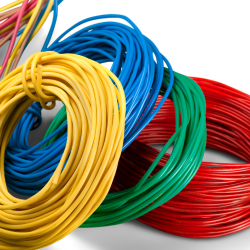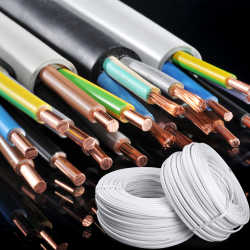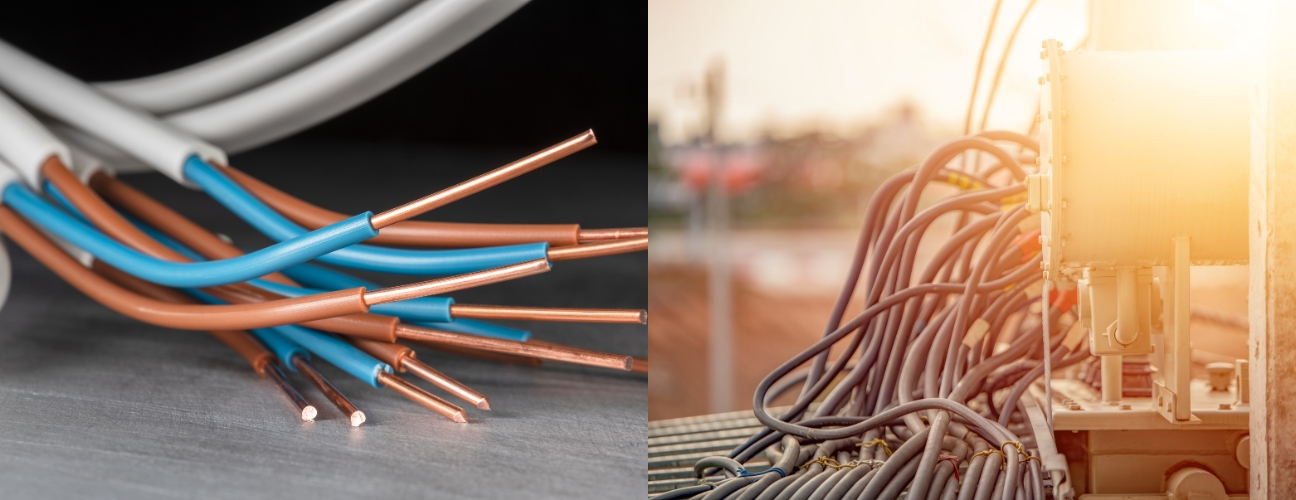In today’s world, electricity is not just a luxury but a critical necessity powering everything from homes to industries. India, with its rapidly growing economy, infrastructure development, and urbanization, continues to witness a surge in electricity demand. This makes power cables indispensable for efficient and safe power transmission. Let’s explore various types of power cables, their essential components, benefits, and factors to consider when choosing the right cable for your needs.
What Are Power Cables?
Power cables are specially designed wires used for transmitting electrical power from one location to another. These cables differ in structure and function depending on voltage rating, insulation, and the environmental conditions they are intended to withstand.
Types of Power Cables
1. HT (High Tension) Power Cables
HT cables, or High-Tension cables, are engineered to transmit high-voltage electricity ranging typically from 3.3 kV to 33 kV and even higher. They are mainly used in power transmission and distribution networks, large industrial setups, and power plants.
Features of HT Cables:
- Conduct electricity efficiently over long distances
- Insulation made from Cross-linked Polyethylene (XLPE), providing durability and resistance to environmental stress
- Shielding and armoring options available for additional mechanical strength and protection
Applications:
- Substations
- Large factories
- Power plants
- Long-distance electricity transmission
LT (Low-Tension) Power Cables
Features of LT Cables:
- Easy installation and handling
- Cost-effective
- Durable and reliable
Common Applications:
- Residential wiring
- Small commercial buildings
- Machinery installations
- Lighting and control systems
Aerial Bunched Cables (AB Cables)
Aerial Bunched Cables (ABC) are used to supply electricity overhead, typically where underground cabling is not feasible or cost-effective. They are insulated cables bundled together tightly, significantly reducing power losses and increasing safety compared to traditional bare conductors.
Types of Aerial Bunch Cables:
- HT Aerial Bunch Cables: Suitable for high voltage overhead transmission lines. Usually insulated with Cross-linked Polyethylene (XLPE).
- LT Aerial Bunch Cables: Used extensively in rural electrification, urban residential areas, and places prone to unauthorized electricity tapping.

Components of Power Cables
Conductors
Conductors carry electrical current and are typically made from copper or aluminum. Copper has superior conductivity but is more expensive, while aluminum is lighter, more economical, and widely used in overhead applications.
Insulation
- PVC (Polyvinyl Chloride): Economical and highly resistant to corrosion and moisture.
- XLPE (Cross-linked Polyethylene): Offers enhanced thermal resistance, chemical stability, and longevity. Ideal for both HT and LT cables.
Protective Jacket or Sheath
Selecting the Right Power Cable
Voltage Rating
Selecting cables based on voltage requirements is crucial. High-voltage systems require HT cables, while low-voltage systems can efficiently operate using LT cables.

Current Carrying Capacity
Cable thickness and conductor size are chosen based on load requirements and the maximum current the cable needs to handle safely. Using undersized cables can lead to overheating and potential hazards.
Environment and Application
The environment plays a key role in selecting the right cable:
- Indoor use: Typically requires cables with flame-retardant insulation and easy installation properties.
- Outdoor use: Demands weatherproof, UV-resistant, and rugged cables for better performance under harsh conditions.
- Industrial setups: Usually require armored cables for additional mechanical protection.
Properties of High-Quality Power Cables
Fire-Resistance
High-quality cables should have excellent flame-retardant properties to prevent or minimize damage during electrical faults and fires.
Durability
Quality cables have a longer operational lifespan due to resistance against moisture, abrasion, temperature fluctuations, and corrosion.
Flexibility
Flexible cables ease installation and reduce the risk of damage, especially in tight spaces and complex wiring arrangements.
Cost-Effectiveness
While choosing quality cables is crucial, balancing affordability with efficiency ensures value and widespread accessibility.
Why Quality Matters
Inferior-quality cables pose risks like frequent short circuits, higher transmission losses, reduced efficiency, and increased maintenance costs. Selecting certified and quality-assured cables ensures operational safety, efficiency, and compliance with regulatory standards.
Advantages of High-Quality Power Cables
- Reduced energy loss: Good insulation and conductor quality reduce electricity losses, enhancing overall efficiency.
- Enhanced Safety: Better cables minimize fire risks, electrical leaks, and short circuits, ensuring safety for both people and assets.
- Cost-effectiveness: Reduced maintenance and increased operational longevity lower long-term investment and operational costs.
Why Choose Capital Cables?
Capital Cables is your trusted partner and an authorized channel partner of leading brands like Polycab, Havells, Apar, Finolex, L&T, CCI, and other industry leaders. We specialize in providing premium-quality power cable solutions tailored to your unique requirements. Equipped with state-of-the-art infrastructure and backed by decades of experience, we deliver solutions precisely tailored to your project’s needs. Whether you require bulk orders or customized cable solutions, Capital Cables ensures your complete satisfaction.


